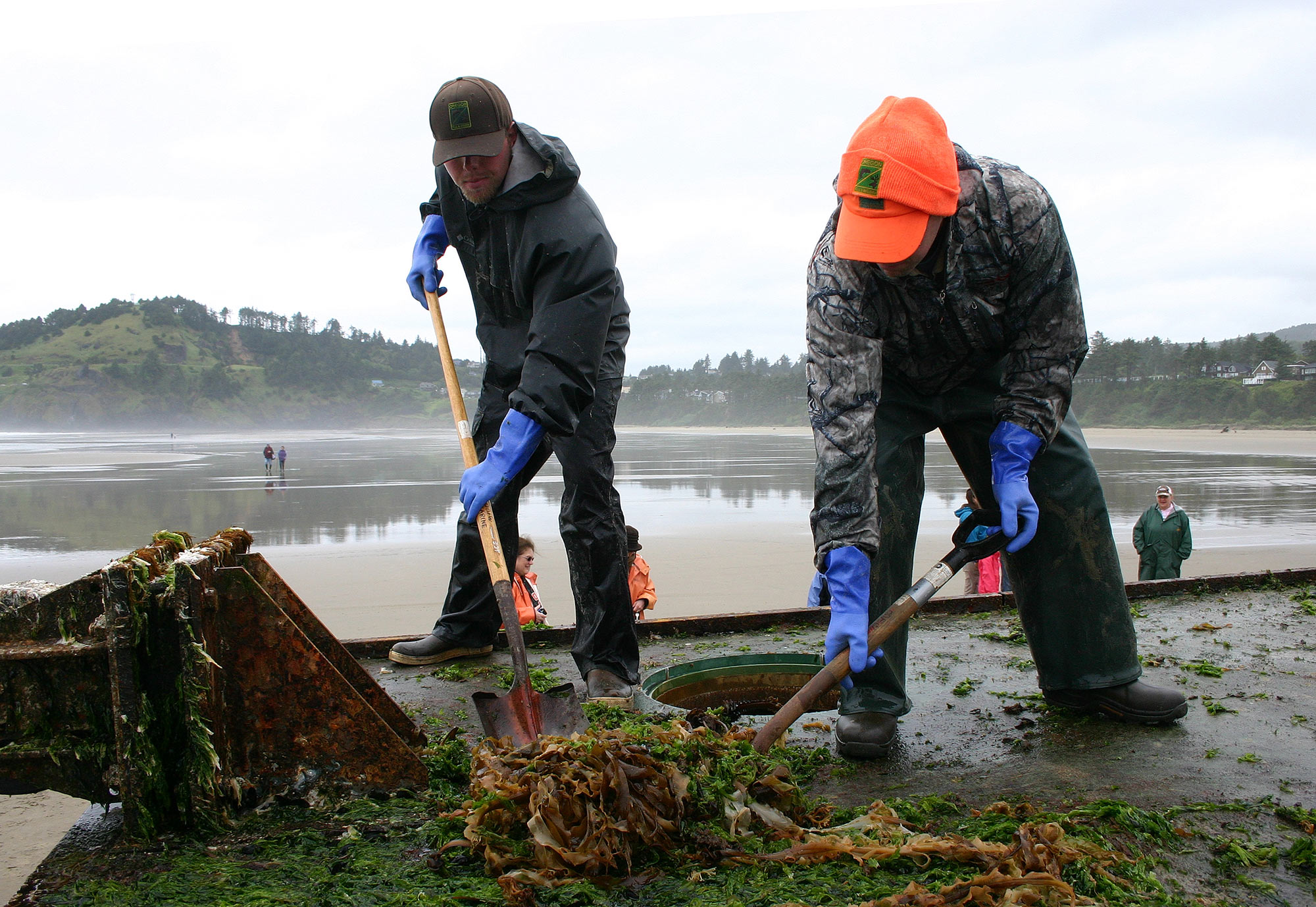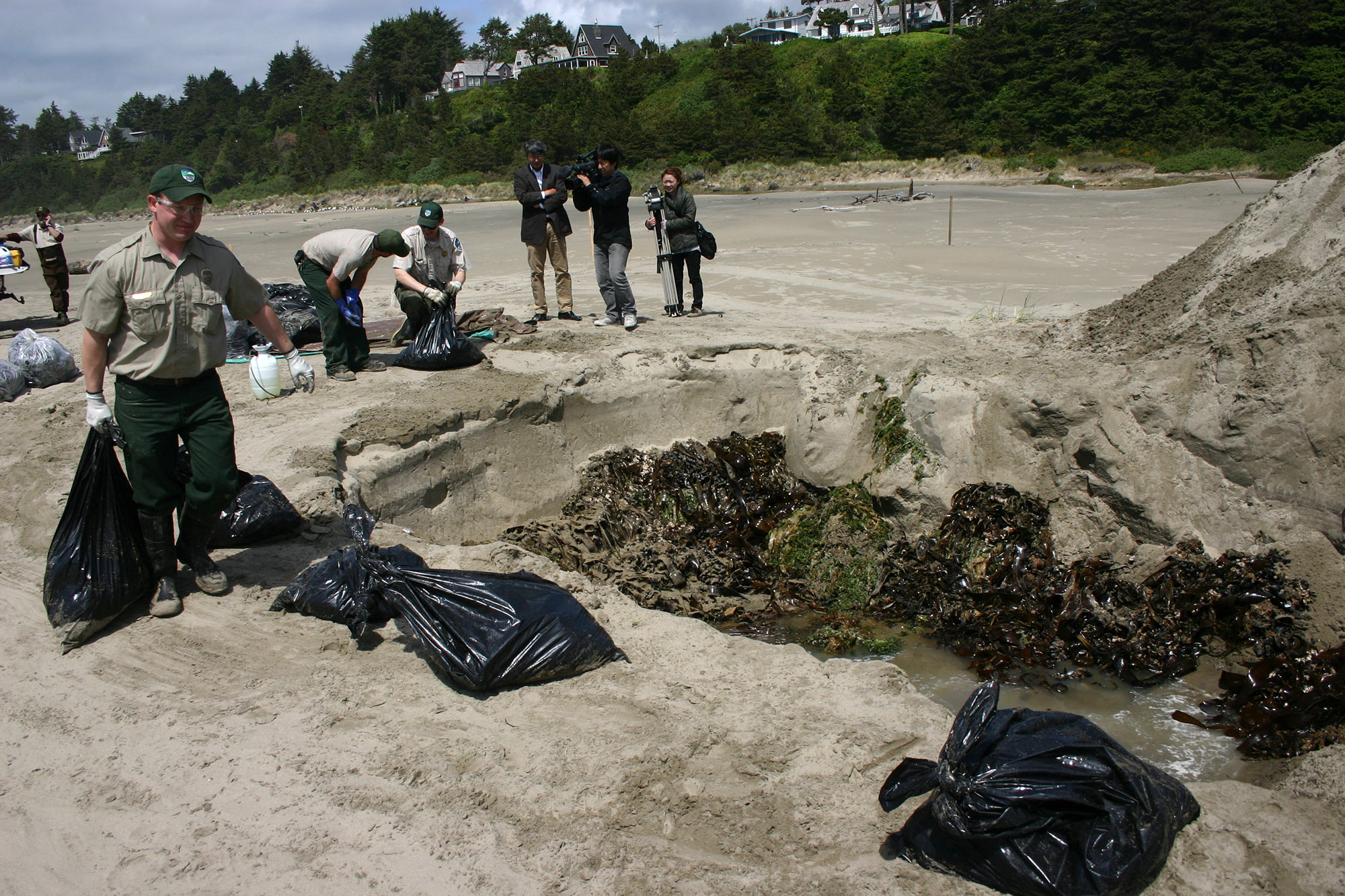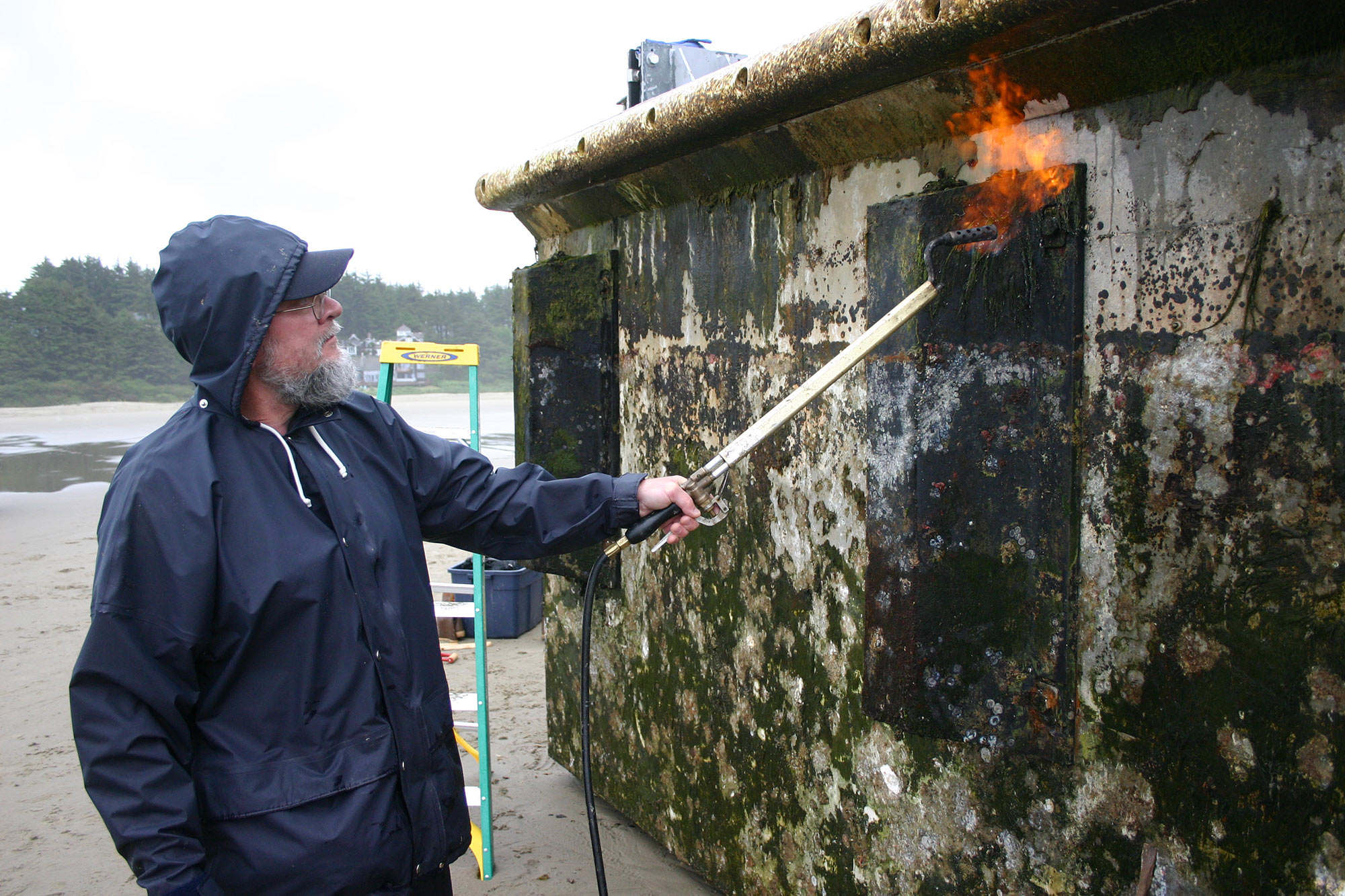By Michelle Marraffini
Invertebrate Zoology and Molecular Ecology
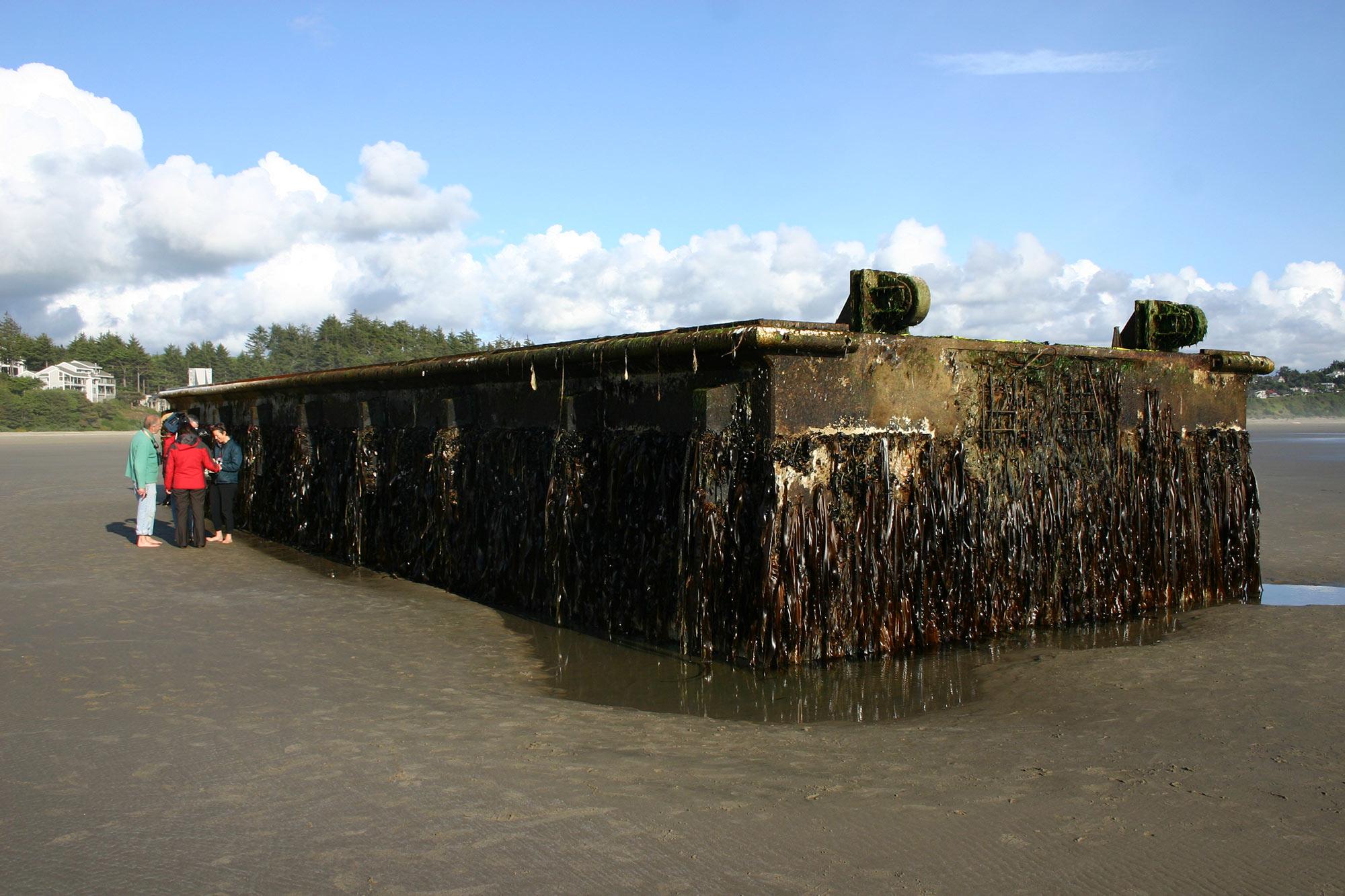
At 66 feet long, 19 feet wide, and 7 feet tall, the massive dock that washed ashore on Oregon's Agate Beach is larger then anything I have ever found on the beach. This dock is one of the first large pieces of debris to make it across the Pacific ocean from Japan after the earthquake and tsunami in March of 2011. According to news reports, the debris came from the northern Japanese city of Misawa, arrived almost nine months earlier than officials originally thought.
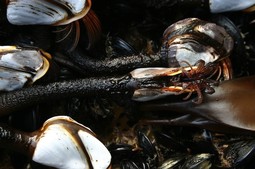
Photo by Oregon State Parks and Recreation Department
But this dock did not arrive alone. Many organisms hitched a ride on this dock for the almost 5,000 mile journey across the ocean. Floating docks and other harbor structures provide habitat for many invertebrates and algae. The movement of these organisms to the Pacific Northwest, many of which are not native to this coast, may pose a threat to the diversity of native species that live there. To prevent these possible problems, scientists and managers took samples of organisms that arrived on the dock then scrapped the remaining organisms, buried them deep in the sand up the beach, and then used blow torches to dock to remove all remnants and reproductive material of the organisms.
After all this work, how are all of the organisms going to be identified? Many of invertebrates on this dock are not native to the Oregon coastline but these species may be small and difficult to identify morphologically. This is where the MLML Invertebrate Zoology and Molecular Ecology lab joins the project. In effort to track these possible new invaders, my lab-mates and I will extract the samples and use polymerase chain reaction to amplify a piece of their DNA. This sampling will allow for easier monitoring of these non-native species through genetic sampling.
To read more about these organisms and their floating home check out your local news avenue and these links.



